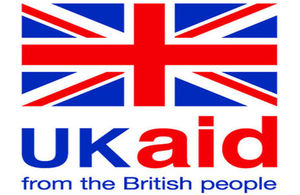What critical issues do girls in North-eastern Kenya and Nairobi slums face?
Finding what works for adolescent girls in Kenya through multi-sectoral interventions

Despite reports of early pregnancies in Kenya, a recent report shows there are low rates of early marriage and childbearing in Kibera and Wajir. The Adolescent Girls Initiative Kenya (AGI-K) baseline report launched on September 29, 2015, shows that less than one percent of girls aged 11-15 in Kibera and Wajir have ever been married or given birth. The results also show majority of girls in Kibera attend school; while in Wajir, at least one in four girls was out of school. In regards to health, results show low levels of sexual activity among girls in both sites.
Many adolescent girls in Kenya, however, face considerable risks and vulnerabilities that can affect their education, health, and general well-being. The report shows for instance, that many girls in both settings hold attitudes that are supportive of gender-based violence and that one out of every three girls in Kibera have experienced emotional, physical and sexual violence. Young girls in both sites also have limited menstrual knowledge.
Speaking at the launch, Kibra Member of Parliament Hon. Kenneth Okoth reiterated the need for governments to provide a safe environment for girls
Sexual initiation for girls in Kibera is high due to coercion or rape. We need to ensure our girls are safe and can walk around without fear”, he said. “We also need to involve faith-based leaders speaking to young girls and adolescents on their sexual and reproductive health.
Taken together, the findings show that young girls in Kibera and Wajir are affected by a number of negative issues. However, there is potential promise in investing in younger adolescents as investments made during this age while majority are still in school and few are sexually experienced can delay early pregnancies and marriage and help curb intergenerational poverty.
As a county government, we are working together with partners and stakeholders to improve primary and secondary education for the children in Wajir. His Excellency Mr. Ahmed Abdullahi, Governor of Wajir County said at the launch.
We have put in Ksh. 70 million to pay school fees for poor children. We have also put in funds to provide sanitary towels for young girls as well as improve infrastructure in schools.
Reiterating the importance of early investments, Lisa Phillips, Head of DFID office in Kenya says,
The UK through DFID has committed to putting girls and women at the heart of development assistance. It is important that we reach girls early enough in their lives to help transform their life chances. This will give them a greater choice and control over decisions that affect them and will mean they are able to contribute more fully to Kenya’s economic development. Empowering Kenyan girls is not only the right thing to do, it’s the smart thing to do
AGI-K will reach over 6,000 girls in Kibera and Wajir with multi-sectoral programs designed to build girls’ assets through a combination of education, social, health and economic interventions. The data that will be generated from AGI-K will help us understand which kinds of interventions are best positioned to help us achieve positive health and wellbeing outcomes.